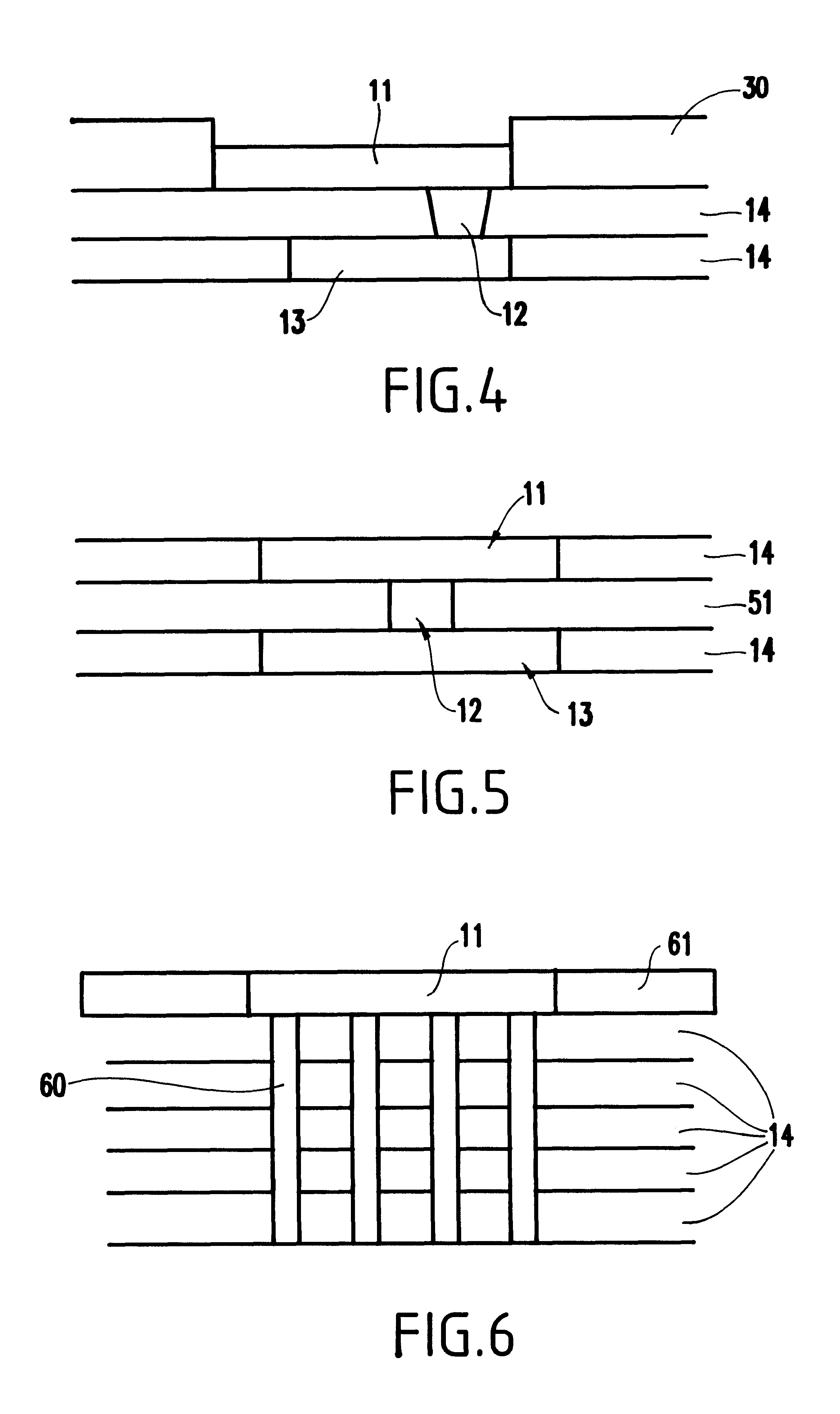Method and structure of column interconnect
a column and interconnection technology, applied in the field of semiconductor devices, can solve the problems of brittle or soft materials, damage to low k dielectric materials, and easy damage to low k materials
- Summary
- Abstract
- Description
- Claims
- Application Information
AI Technical Summary
Benefits of technology
Problems solved by technology
Method used
Image
Examples
first embodiment
the invention is illustrated in FIG. 1 and includes a last metallization layer (LM) 11, a second to last metallization layer (LM-1) 13, a conductive via 12 connecting the two metallization layers 11, 13, and inter-layer dielectrics 14 which provide electrical insulation, but are too fragile to provide adequate mechanical support. In addition to the conventional structure, the invention includes a protective cap 10.
The invention adds the protective cap 10 above the last metallization (LM) layer 11. The thickness of the cap 10 is between 1 and 20 microns, and is preferably 10 microns thick. The cap 10 can be formed of, for example, silicon dioxide (SiO.sub.2), (spin-on-glass) SOG, silicon nitride, doped SiO.sub.2 (i.e. F, B, P), HSQ, MSQ or other similar protective substance. The preferred embodiment would comprise 50 .mu.m nitride, 1 .mu.m oxide, 1 .mu.m nitride, 1 .mu.m oxide (nitride=Si.sub.x N.sub.y H.sub.z an oxide=SiO.sub.2), but could be any similar structure. Note the initial ...
PUM
 Login to View More
Login to View More Abstract
Description
Claims
Application Information
 Login to View More
Login to View More - R&D
- Intellectual Property
- Life Sciences
- Materials
- Tech Scout
- Unparalleled Data Quality
- Higher Quality Content
- 60% Fewer Hallucinations
Browse by: Latest US Patents, China's latest patents, Technical Efficacy Thesaurus, Application Domain, Technology Topic, Popular Technical Reports.
© 2025 PatSnap. All rights reserved.Legal|Privacy policy|Modern Slavery Act Transparency Statement|Sitemap|About US| Contact US: help@patsnap.com



